Showing all 3 results
- Price range: € 5,45 through € 36,30 Incl. VATSelect options This product has multiple variants. The options may be chosen on the product page
- Price range: € 3,50 through € 48,25 Incl. VATSelect options This product has multiple variants. The options may be chosen on the product page
- Price range: € 3,75 through € 45,50 Incl. VATSelect options This product has multiple variants. The options may be chosen on the product page
Showing all 3 results
What is Syrian Rue?
Syrian rue is far more than just a hardy weed it appears to be at first glance; it is an enduring symbol of auspiciousness, a powerful healer of the weak, and a potent catalyst of mystical experiences. In this article, we will explore its traditional and contemporary uses, its fascinating chemical congruity with the ayahuasca vine, and its diverse medicinal applications that could transform how we approach healthcare.
Known to science as Peganum harmala, Syrian rue is a perennial, flowering plant native to the temperate desert areas of North Africa and the Middle East, the Mediterranean region of Europe, and parts of Central and South Asia.
Some of the countries Syrian rue is endemic to include: Morocco, Spain, Italy, Serbia, Kazakhstan, Mongolia, Yemen, Saudi Arabia, Pakistan, Afghanistan, India, Iran, Azerbaijan, Tajikistan, Turkey, China, and Israel. It’s been planted throughout the world as well, often because it can yield a potent 'Turkish red' dye, usually used for carpets.
Syrian rue got its name due to its resemblance to common rue (Ruta graveolens), with which it shares some of its native habitat. It is also recognized by numerous other names, including African rue, wild rue, esphand, haoma, and harmel.
Revered for their powerful properties, Syrian rue seeds have played significant roles in the cultures and traditions of the plant’s native lands. Their smoke has widely been employed as incense, believed to possess sacred and healing properties as well as to provide protection from malevolent forces.
Consuming the seeds directly or drinking a Syrian rue tea, on the other hand, can lead to an altered state of consciousness and even catalyze a potent entheogenic journey if combined with the right admixture — more on this later.
Aside from the seeds, Syrian rue leaves and seed capsules have also seen centuries of use for both cultural (magic, tradition, and superstition) and medicinal purposes. Here are some of rue’s documented applications throughout history:
- Ancient Greeks and Romans reportedly used Syrian rue leaves or their aqueous extracts for treating various ailments such as fever, earaches, bruises, wounds, venomous bites, and skin inflammations. The leaves were also used for parasite removal, for improving male fertility, and for 'purifying' women after childbirth.
- In the Middle East, North Africa, and Western China, Syrian rue has been used to stimulate menstrual blood flow in women and perform abortions.
- In India, Syrian rue has a long history of use in treating a wide range of conditions, including gastrointestinal issues, urinary and sexual disorders, epilepsy, menstrual problems, psychological ailments, and more.
- In Iran, Turkey, and Azerbaijan, dried Syrian rue seed capsules are hung in homes or vehicles to ward off the "evil eye."
- In Tajikistan, the smoke from burning the plant is used to treat paralysis and the leaves are used for making poultices to treat swelling and tumors.
- In Turkey, the smoke from burning Syrian rue seeds has been used to treat mental illness.
- Kashmiri Hindus and Persians burn the seeds as incense during weddings to invite good luck and protection.
- In several countries, including Iran, Iraq, Tajikistan, Afghanistan, Pakistan, and India, the seeds have been consumed ritualistically for their psychoactive properties.
- In Iran and potentially its neighboring countries, Syrian rue seeds might be used in combination with another psychoactive plant, producing a powerful entheogenic concoction chemically analogous to the sacred Amazonian ayahuasca brew. This other plant might be one of the DMT-containing Acacia species growing throughout the Middle East, perhaps Acacia tortilis.
There are also records of other traditional medicinal uses of Syrian rue throughout its native habitat, including for treating cardiovascular, respiratory, nervous, and endocrine disorders, pain, fever, tumors, cancers, rheumatism, arthritis, microbial infections, diabetes, and various skin and hair conditions. Many of these folklore-sourced use cases have also stood up to scientific scrutiny.
Could Syrian Rue Be the Long Lost Soma Plant?
The mystical soma or haoma plant, described in ancient Hindu and Zoroastrian texts, is said to yield a liquid which has the power to induce profound states of altered consciousness and a connection to the divine.
The hymns in the Rigveda, the oldest sacred book of India, and the largest tome of the four Vedas, tell about warrior gods but also regular mortals who drunk the liquid extracted from this powerful plant, mixed with water and milk. The translation of the text states that they felt like they had “become immortal,” “gone to the light,” and “found the gods.”

In the primary Zoroastrian collection of texts, the Zend-Avesta, a drink made from haoma, called parahaoma, is said to grant speed and strength to warriors, righteous sons to those giving birth, and spiritual power and knowledge to those who study the Avestan law.
Haoma and soma appear to have the same etymological roots and native grounds, and to both imbue their drinkers with enhanced energy, wisdom, and awareness. As such, historians have traditionally assumed that they might be the same plant, whose identity has been lost to contemporary botany.
With the slight overlap in the geographical range and psychoactive properties of wild Syrian rue and soma/haoma, as well as rue’s Middle Eastern regional moniker, haoma, it was suggested as a potential candidate for this powerful ritualistic plant of the ancient Indo-Aryans and Persians.
However, the assertion of Syrian rue as the long-lost Soma plant faces several significant challenges:
- The geographic distribution of the harmala species does not completely align with the proposed original or secondary homeland of the Indo-Aryans, raising doubts about its potential historical usage in ancient Indo-Iranian customs.
- The continuing abundance of wild Syrian rue in India contradicts the idea that knowledge of the original soma plant would have been lost in the region.
- The use of Syrian rue seeds for their psychoactive effects does not match the textual descriptions in the Rigveda or the Zend-Avesta, which consistently reference the stems of the soma or haoma plant, respectively.
- The sedative effects of Syrian rue stand in contrast to the stimulating effects associated with drinking an extract of soma or haoma.
With all the above arguments noted, it is reasonable to conclude that Syrian rue is most likely not the elusive soma/haoma plant.
Syrian Rue Effects
Syrian rue seeds contain around 160 alkaloids, with most reportedly lacking bioactivity. The best studied and most present ones are three β-carboline alkaloids, also known as harmalas: harmine, harmaline, and tetrahydroharmine.
Each of these alkaloids has subtle but distinct psychoactive effects:
- Harmine is known to induce a pleasant, detached, and dreamy yet clear-headed state of mind, but also nausea and stomach discomfort.
- Harmaline is said to catalyze a dreamy, hypnotic, and unemotional state, similar to harmine but more disorienting and foggy. It is also the most psychoactive of the three harmalas.
- Tetrahydroharmine reportedly enhances mood, creating an emotionally enjoyable state accompanied by pleasant bodily tingling and mild closed-eye visions.
The Alkaloid Overlap
Interestingly, this active alkaloid profile matches that of the ayahuasca vine (Banisteriopsis caapi) well enough for the two plants to be able to be used almost interchangeably.
Just like B. caapi, the experience of consuming Syrian rue on its own equates to more than the sum of the effects of the individual alkaloids. It’s also distinct in its therapeutic properties, the way it alters perception and consciousness, and the mild visions it produces.
Delving Deeper into Dreams
There are also numerous anecdotal reports available online about the impact Syrian rue seeds may have on dreams. Consuming the seeds, optionally alongside other herbs like mugwort and wormwood, is said to lead to enhanced dreamscapes and even to promote lucid dreaming. This captivating effect adds another layer of mystique to the diverse array of Syrian rue's properties.
Syrian Rue Benefits
 Compared to most other psychoactive substances, a relatively large body of scientific reports can be found on the therapeutic benefits of Syrian rue whole seeds, total alkaloid extract, or individual alkaloids. While most of this research has been conducted in vitro or on animal models, the studies have still unveiled many promising aspects of Syrian rue's medicinal potential.
Compared to most other psychoactive substances, a relatively large body of scientific reports can be found on the therapeutic benefits of Syrian rue whole seeds, total alkaloid extract, or individual alkaloids. While most of this research has been conducted in vitro or on animal models, the studies have still unveiled many promising aspects of Syrian rue's medicinal potential.
Whether in the form of seeds or specific alkaloid extracts, P. harmala has displayed a range of beneficial properties, including: analgesic (pain-relieving), antidiabetic, antibacterial, antiviral, antifungal, antiparasitic, anticancer, antiparkinsonian, neuroprotective, and anti-addictive effects. Additionally, it has exhibited a range of interesting central nervous system (CNS) effects and has shown promise in improving the condition of patients with enlarged prostates. These are just a few of the diverse and well-documented Syrian rue benefits.
As they contain MAOIs, Syrian rue seeds can also potentially offer therapeutic benefits for conditions such as depression and anxiety. The reasoning behind this assertion is that harmala alkaloids prevent the breakdown of the monoamine neurotransmitter serotonin, thereby increasing its levels in the central nervous system, in a more natural and less harmful way than synthetic MAOI antidepressants do.
However, harmalas also interact with various other neuroreceptors, including those responsible for regulating mood, such as dopamine, nicotinic, and opioid receptors. These interactions spell the need for more comprehensive research to ascertain the safety profile and effectiveness of Syrian rue seeds in addressing mental health conditions.
Syrian Rue Side Effects & Contraindications
Consuming recommended doses of Syrian rue seeds is generally considered safe for healthy individuals. However, like with any psychoactive substance, there are potential side effects and contraindications to be aware of.
Common Side Effects
Common side effects of Syrian rue consumption may include: nausea, vomiting, confusion, visual and auditory hallucinations, bradycardia (slow heart rate), and low blood pressure. The altered state of consciousness that Syrian rue can induce may lead to drowsiness, detachment, and confusion, making it ill-advised to drive or operate heavy machinery while under its influence.
Extreme Dose Side Effects
At excessively high doses, Syrian rue seeds can become toxic, causing severe gastrointestinal distress, vomiting blood, gastric ulceration, tremors, convulsions, kidney and liver damage, hypertension, tachypnea (rapid breathing), tachycardia (rapid heart rate), life-threatening respiratory depression, and even coma.
Medication Interactions
An important consideration is the potential interaction of harmala alkaloids in Syrian rue seeds with certain pharmaceuticals, particularly those that also contain MAOIs or SSRIs, which are in most conventionally prescribed antidepressants.
As MAOIs themselves, harmalas inhibit the metabolization of serotonin in the central nervous system, increasing its levels significantly. Introducing more MAOIs or SSRIs (the latter inhibit the reuptake of serotonin, also increasing its availability) into the system can lead to a surplus of this neurotransmitter, potentially resulting in a life-threatening condition called serotonin syndrome.
Therefore, anyone on MAOI or SSRI antidepressant regimens is strongly discouraged from consuming Syrian rue seeds.
Tyramine Interaction
Additionally, since harmalas are MAOIs, consuming them along with significant amounts of tyramine-rich foods or beverages can lead to a hypertensive crisis as a result of a negative biochemical interaction. Here is a list of tyramine-rich items that should be avoided for several days before and after consuming Syrian rue.
Pregnancy
Finally, consumption of Syrian rue is not recommended to pregnant or breastfeeding women due to the historical use of harmalas as abortifacients and the lack of scientific understanding of the effects of P. harmala on lactating women.
How to Consume Syrian Rue Seeds
Syrian rue seeds can be consumed in several ways. Here are a few of the most common methods:
-
 Chewing: The most straightforward approach is to chew the seeds directly for a few minutes and then swallow them. However, many people characterize their taste as ‘putrid’ and report the highest levels of nausea from this method.
Chewing: The most straightforward approach is to chew the seeds directly for a few minutes and then swallow them. However, many people characterize their taste as ‘putrid’ and report the highest levels of nausea from this method. - Brewing a Syrian rue tea: The most popular seed preparation method is brewing them into a Syrian rue tea. They can be ground in a coffee grinder or powerful blender for best effect, then simmered in water for approximately 30 minutes. The liquid is strained and can be further reduced in order to limit the unpleasant taste.
- Filling pills: Finely ground seeds can be measured out into desired dosages and loaded into gel capsules. This method offers precise control over the amount consumed and the least amount of nausea.
Can Syrian Rue Be Addictive?
Harmala alkaloids are not considered physiologically addictive. Reports do not indicate tolerance buildup with long-term use, and toxicity studies have revealed that they are rapidly metabolized without accumulating in the body.
However, as with any psychoactive substance, there is potential for abuse, so responsible and moderate consumption is advised.
Syrian Rue Legality
As the harmala alkaloids within Syrian rue are not considered highly psychoactive, the seeds are typically not scheduled, and are legal to purchase and possess in most of the world.
However, due to the classification of P. harmala as a noxious weed and invasive species in some U.S. states, the sale and possession of the plant and seeds has been banned in those areas. Additionally, a few countries such as France, Finland, and Australia do regulate the possession of harmalas or the plant itself.
Where to Buy Syrian Rue Legally?
Here at Maya Ethnobotanicals, we offer a range of traditional medicinal plants which have been used by indigenous peoples for a variety of purposes since ancient times.
Our products are organically grown, sustainably harvested, and sourced through fair trade, and we sell them with the intention to promote ethnobotanical enthusiasm throughout the world.
We do not advocate for the use of any of our products in illegal ways, nor do we ship any of our botanical samples to countries where they are illegal. We advise our customers to inform themselves thoroughly about their local regulations before placing an order.
If you’re looking for Syrian rue for sale, you may purchase the seeds from our webshop:
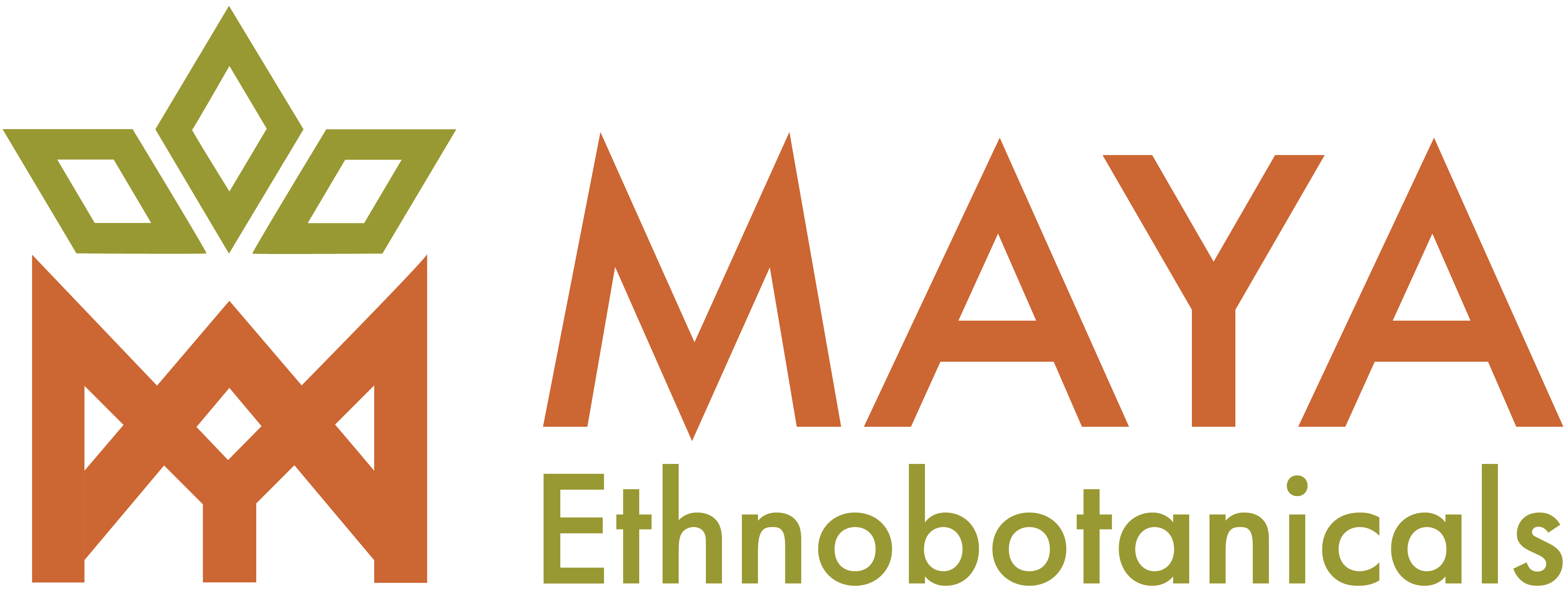

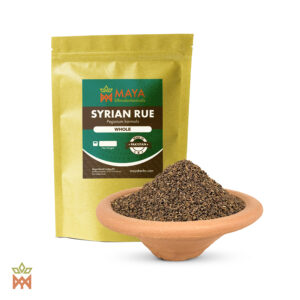
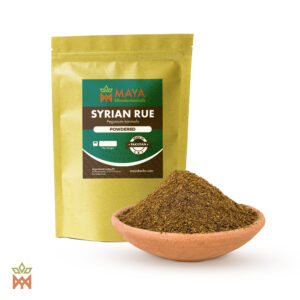
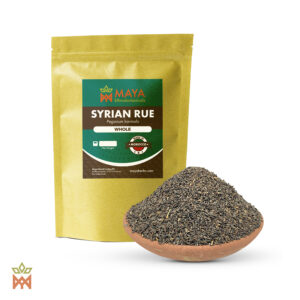
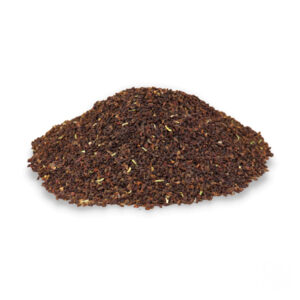 Chewing: The most straightforward approach is to chew the seeds directly for a few minutes and then swallow them. However, many people characterize their taste as ‘putrid’ and report the highest levels of nausea from this method.
Chewing: The most straightforward approach is to chew the seeds directly for a few minutes and then swallow them. However, many people characterize their taste as ‘putrid’ and report the highest levels of nausea from this method.